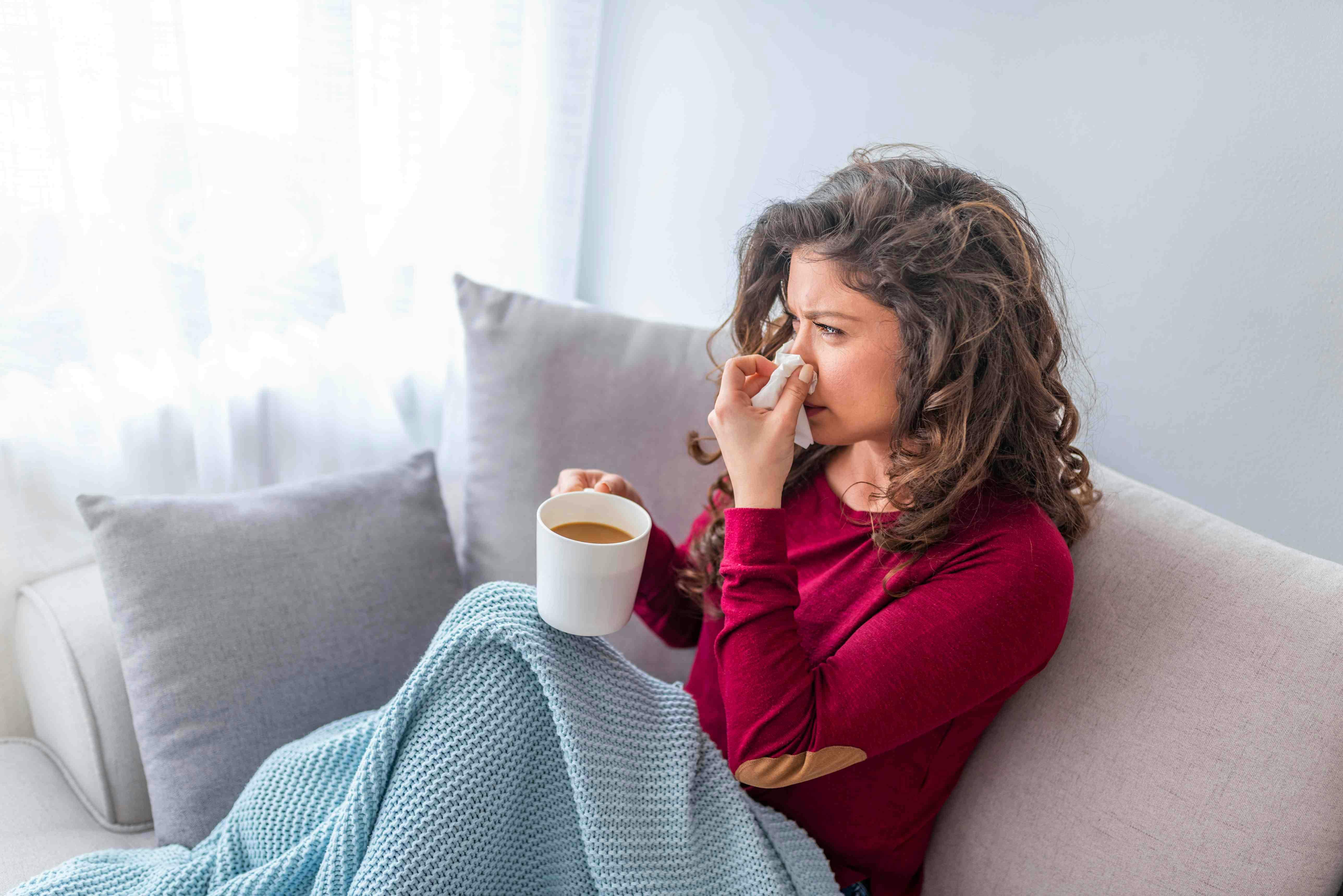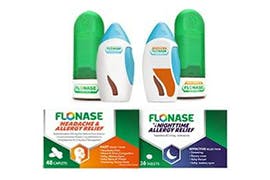
The Difference Between Cold vs. Flu vs. Allergy Symptoms
Many of us struggle to figure out whether our symptoms stem from a cold, flu or allergies. Symptoms of the common cold, the flu or seasonal allergy conditions can seem very similar. With so many symptoms common to all three, it can be a tricky question to answer as to which is bothering you. Knowing which symptoms are typical of each condition can be a helpful place to start. And of course, speaking with your doctor is the only way to get a confirmed diagnosis in the cold vs flu vs allergies quandary.
No one likes dealing with stuffed noses, sneezing or itchy eyes, but there are ways to help prevent all of these symptoms. Learn more about ways to prepare for allergy season, as well.
Check out this chart below to help tell the difference between cold vs. flu vs. allergy symptoms. Learn more about Flonase products to help your allergy symptoms and explore our allergy content.
WHICH SYMPTOMS ARE TYPICAL OF EACH CONDITION?*
FEVER
or allover body ache1,2
COLD
Rare
FLU
Common
ALLERGY
Not Typical
DURATION
of symptoms 1,2,3
COLD
2–14 days
FLU
Up to 1–2 weeks
ALLERGY
Often longer than 3 weeks
MUCUS1
COLD
Thick yellowy mucus
FLU
Thick yellowy mucus
ALLERGY
Clear thin mucus
SNEEZING1
COLD
Less prominent, with longer rest time between sneezes
FLU
Less prominent, with longer rest time between sneezes
ALLERGY
More prominent, with sneezes in rapid succession
ITCHY EYES1
COLD
Uncommon
FLU
Uncommon
ALLERGY
Common
Treating Allergy Symptoms
The easiest way to treat allergy symptoms is by avoiding allergens as much as possible. Depending on your allergies, this could mean staying indoors during high pollen counts, keeping windows and doors closed, and using air filters.3 Over-the-counter products, like Flonase and Flonase Sensimist, can help alleviate symptoms like sneezing, itchy and runny nose, itchy eyes and nasal congestion. If you’re allergic to things like pet dander, pollen or dust mites, keep your living space clean and dust-free and wash your sheets and bedding regularly.3
Treating Cold Symptoms
There are several ways to help alleviate your cold symptoms at home. Most importantly, get plenty of rest and stay hydrated by drinking fluids like water, tea, broth and juice.1 Warm liquids are especially useful as they can help increase mucus flow and loosen congestion. Adding moisture to dry air with a humidifier or vapor machine can also help congestion.1 Over-the-counter medications like decongestants and pain relievers can provide temporary relief from your symptoms but won’t shorten the duration of your cold.1
Treating Flu Symptoms
Like treating cold symptoms, treating flu symptoms at home involves getting plenty of rest and drinking fluids to prevent dehydration. If needed, over-the-counter pain medications can help reduce fever and relieve body aches. Prevent spreading the flu to others by washing your hands frequently and covering your mouth and nose if you need to cough or sneeze.2 If your symptoms get worse, you may need to see your healthcare provider to help manage your symptoms and prevent complications.2
Now that you know the difference between cold vs. flu vs. allergy symptoms, find the right remedy and start soothing your sniffles. For more information on treating allergy symptoms, visit our All About Allergies hub.
Sources:
- Cold remedies: What works, what doesn't, what can't hurt - Mayo Clinic. https://www.mayoclinic.org/diseases-conditions/common-cold/in-depth/cold-remedies/art-20046403. Accessed 4/21/23.
- Influenza (flu) - Diagnosis and treatment - Mayo Clinic. https://www.mayoclinic.org/diseases-conditions/flu/diagnosis-treatment/drc-20351725. Accessed 4/21/23.
- Allergies - Diagnosis and treatment - Mayo Clinic. https://www.mayoclinic.org/diseases-conditions/allergies/diagnosis-treatment/drc-20351503. Accessed 4/21/23.
